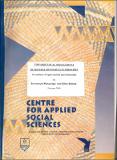| dc.contributor.author | Manzungu, Emmanuel . | |
| dc.contributor.author | Sithole, Ellen | |
| dc.coverage.spatial | Zimbabwe | en_GB |
| dc.date.accessioned | 2014-12-02T18:55:28Z | |
| dc.date.available | 2014-12-02T18:55:28Z | |
| dc.date.issued | 2000-02 | |
| dc.identifier.citation | Manzungu, Emmanuel & Sithole, Ellen (2000) Towards Local Management Of Mineral Resources In Zimbabwe An Analysis Of Opportunities And Constraints, CASS Occasional Paper - NRM< CPN 105. Harare, Mt. Pleasant: CASS | en_GB |
| dc.identifier.uri | https://opendocs.ids.ac.uk/opendocs/handle/20.500.12413/5310 | |
| dc.description | A CASS Working Paper on managing locally Zimbabwe's mineral resources. | en_GB |
| dc.description.abstract | In Zimbabwe today, the State - through its various agencies - is the dominant player in die mining sector, from issuing prospecting licenses right up to marketing. The Mines and Minerals Act (chapter 21: 05) vests authority to administer granting of prospecting rights, acquisition of mining claims and payments of levies in the Mining Affairs Board, a body appointed by the Minister of Mines, Environment and Tourism. The Mineral Marketing Corporation of Zimbabwe Act of 1982 resulted in the formation of the Mineral Marketing Corporation of Zimbabwe which is the sole marketing and selling agent for all minerals exported out of Zimbabwe, except gold and silver, which fall under the control of the Reserve Bank. The bulk of mineral revenue accrues to the government ahead of Rural District Councils (RDCs) who have responsibilities towards road maintenance and provision of other services, and local communities who bear the brunt of environmental damage due to mining activities. A study into the structure of revenue sharing showed that RDCs obtained less than 0.1 % of the revenue (Owen and Maponga, 1996). This revenue is from two main sources. In terms of section 96(1 Ob) of the Rural District Councils Act, Chapter 29: 13, RDCs may charge levies to owners of mining locations situated on rural land in their areas. The levy is based on either the number of employees or output in tonnes in the case of precious metals. The levy is in the form of unit tax. Section 188 of the Mines and Minerals Act entitles RDCs to receive landowners' fees from mining activities in their areas. This is because, although RDCs are not the legal owners of the communal land under their jurisdiction (the land belongs to the state represented by the president in terms of section 4 of the Communal Land Act, Chapter 20: 04), sub-section (7) of section 188 specifically provides that they are regarded as the landowners for the purpose of receiving landowners' fees. The fees are pegged at $1.50 per hectare for an operational mine and $0.60 for a non-operational one. Mining royalties are not collected in Zimbabwe - they were last collected in 1975 as a measure to attract investment in the mining sector. | en_GB |
| dc.description.sponsorship | “This publication has been possible through the support of the US Agency for International Development (USAID) under the Natural Resources Management Project (NRMP) Phase II - Zimbabwe. | en_GB |
| dc.language.iso | en | en_GB |
| dc.publisher | Centre for Applied Social Sciences (CASS) , University of Zimbabwe (UZ) | en_GB |
| dc.relation.ispartofseries | CASS Working Paper - NRM , CPN Seies;NRM; CPN 105 / 2000 | |
| dc.rights.uri | http://creativecommons.org/licenses/by-nc-nd/3.0/ | en_GB |
| dc.subject | Economic Development | en_GB |
| dc.subject | Environment | en_GB |
| dc.subject | Participation | en_GB |
| dc.title | Towards Local Management Of Mineral Resources In Zimbabwe An Analysis Of Opportunities And Constraints | en_GB |
| dc.type | Series paper (non-IDS) | en_GB |
| dc.rights.holder | University of Zimbabwe | en_GB |


